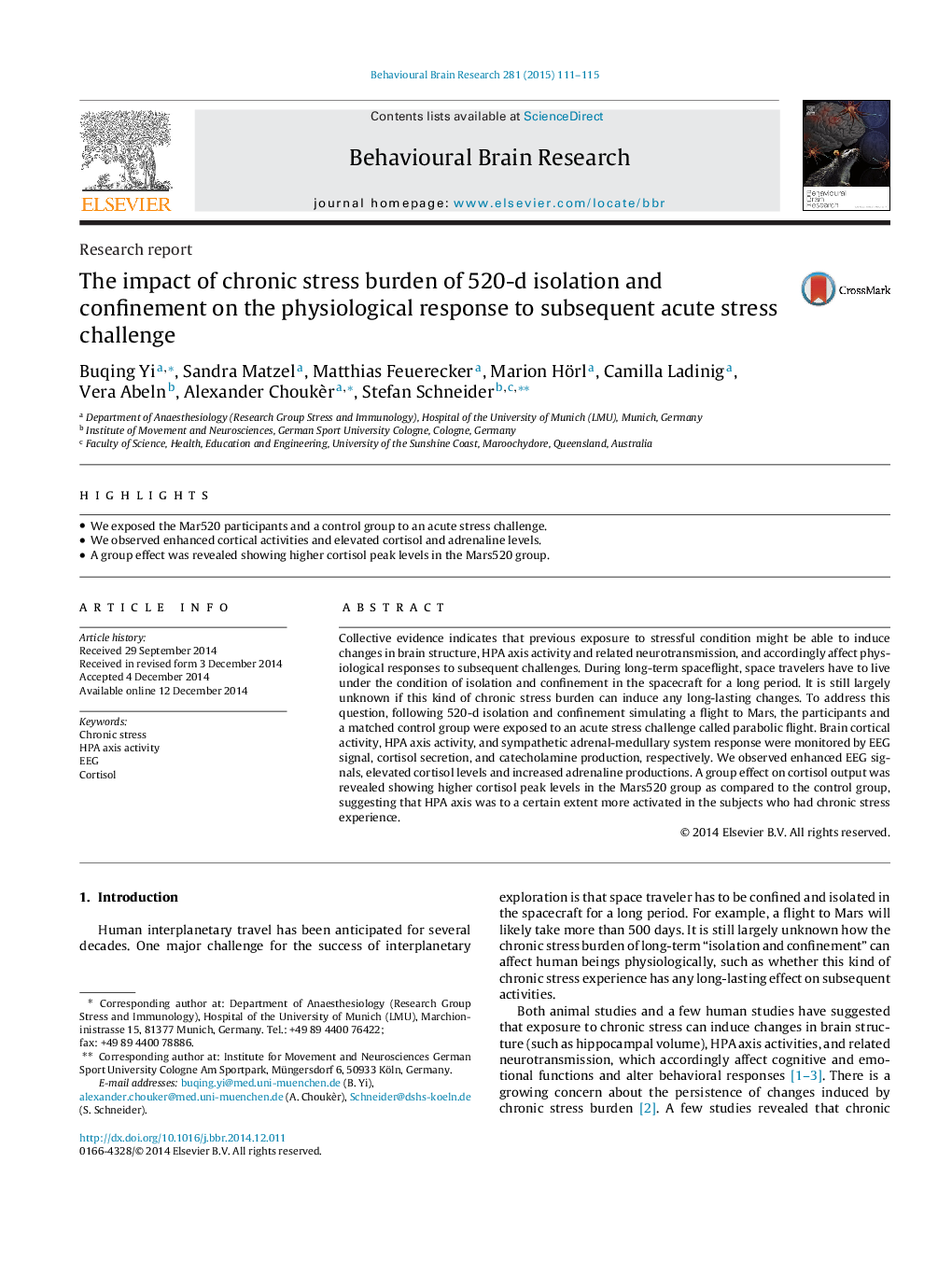| Article ID | Journal | Published Year | Pages | File Type |
|---|---|---|---|---|
| 6256978 | Behavioural Brain Research | 2015 | 5 Pages |
â¢We exposed the Mar520 participants and a control group to an acute stress challenge.â¢We observed enhanced cortical activities and elevated cortisol and adrenaline levels.â¢A group effect was revealed showing higher cortisol peak levels in the Mars520 group.
Collective evidence indicates that previous exposure to stressful condition might be able to induce changes in brain structure, HPA axis activity and related neurotransmission, and accordingly affect physiological responses to subsequent challenges. During long-term spaceflight, space travelers have to live under the condition of isolation and confinement in the spacecraft for a long period. It is still largely unknown if this kind of chronic stress burden can induce any long-lasting changes. To address this question, following 520-d isolation and confinement simulating a flight to Mars, the participants and a matched control group were exposed to an acute stress challenge called parabolic flight. Brain cortical activity, HPA axis activity, and sympathetic adrenal-medullary system response were monitored by EEG signal, cortisol secretion, and catecholamine production, respectively. We observed enhanced EEG signals, elevated cortisol levels and increased adrenaline productions. A group effect on cortisol output was revealed showing higher cortisol peak levels in the Mars520 group as compared to the control group, suggesting that HPA axis was to a certain extent more activated in the subjects who had chronic stress experience.
